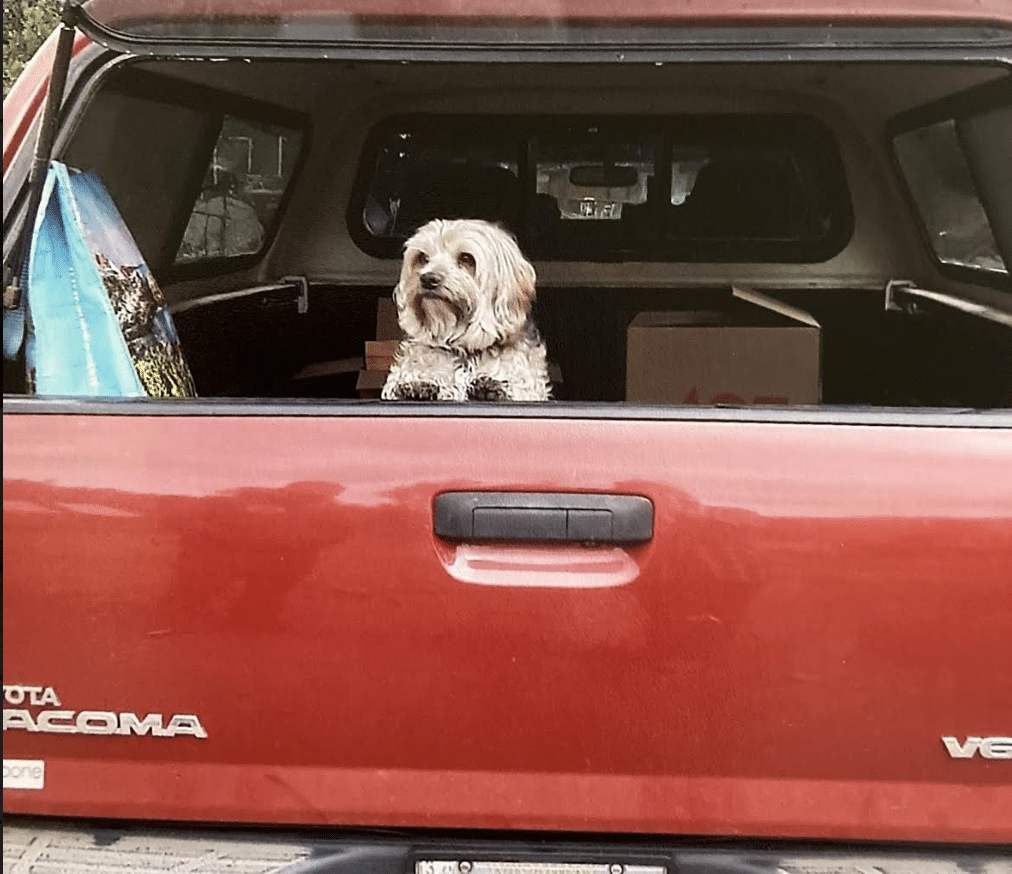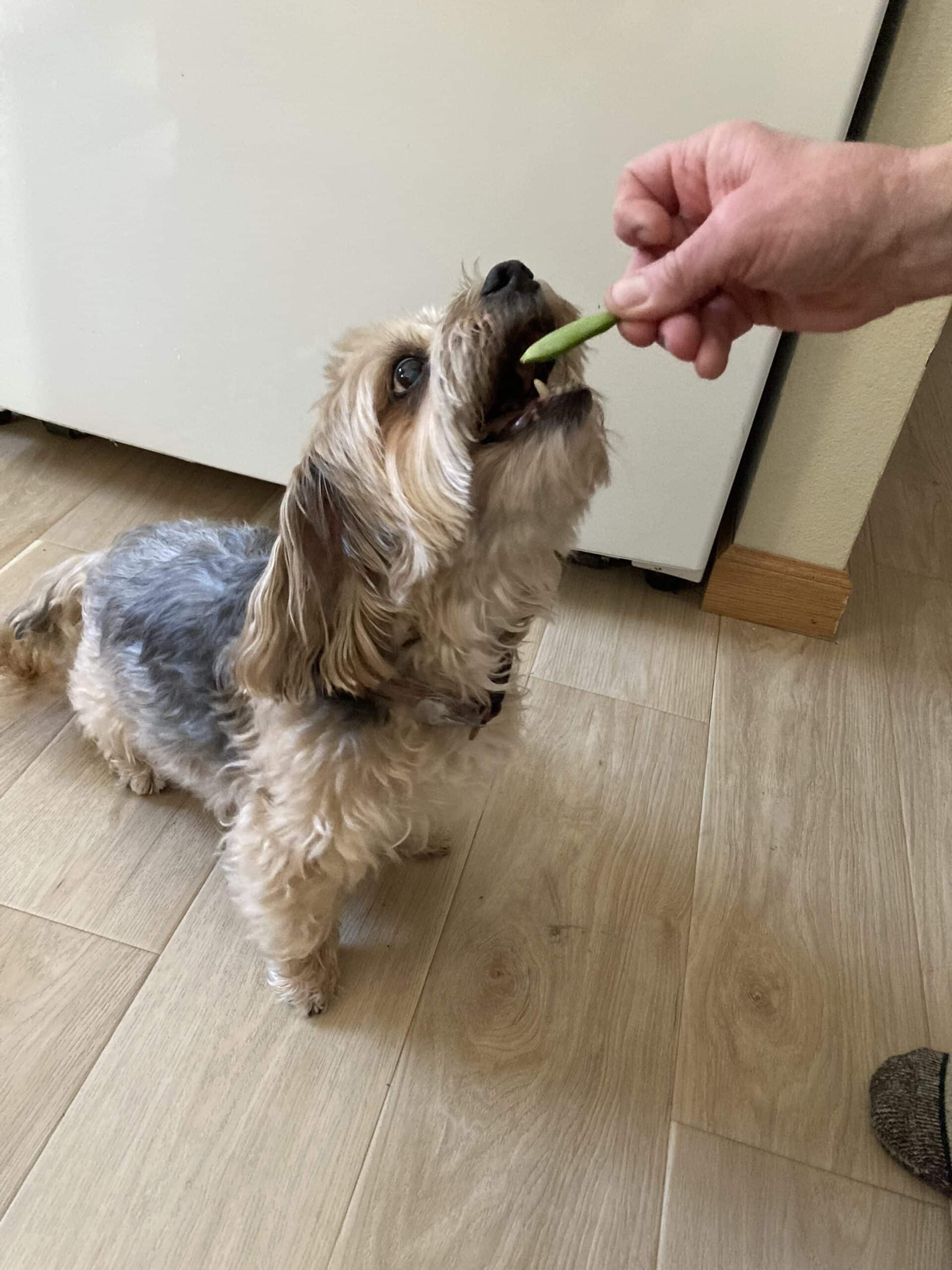Your older dog has been your buddy for a long time. Maybe since they were a pup or perhaps you were lucky enough to find your friend later in their life. You have been able to tell when they were ready for dinner or for their walk. You know when they are tired, restless, happy or bored.
Now they are starting to show signs of aging, perhaps by that dignified gray muzzle, or the selective listening, “I’m older now, if I don’t feel like listening I won’t!” Maybe you have also noticed that they are slowing down- the walks are shorter, and going up the stairs takes longer. Their appetite is different too- they’ve become more picky with what they will eat.
What do these changes mean? How can you tell what is normal aging and what is a problem?
When I think about suffering and quality of life, I use several categories to assess this, then combine them to create a picture of how my patients are feeling. In this article, I will walk through each quality of life category to help guide you through answering the tough question if your senior pet may be suffering.
These categories are:
- Breathing
- Pain/Mobility
- Ability to eliminate normally
- GI function
- Quality of sleep
- Anxiety/Dementia
- Joy
“My dog, Lego, is 12 years old now and I can tell you that even as a veterinarian, it is difficult for me to know how he is feeling. When you are the one closest to them, sometimes you need some help.”

Breathing
For the majority of our seniors, this is not a problem. I have placed this first on the list because if there are observed troubles with breathing, then this is very serious. You might notice more coughing than normal, or that the number of breaths they are taking while resting is higher. Their rib cage or belly seem to be expanding more during a breath, or that they are only able to rest on their chest rather than their side. If any of these are noted, then they must be examined by a veterinarian as soon as possible.
Pain and Mobility
Perhaps the question that is foremost in our minds is, “How can I tell if my dog is in pain?” Ironically, it is also the most difficult to understand. It would be so much easier if they would hold up their little paw and and whine to tell us it hurts, but that is rarely the case.
Signs of pain in dogs tend to be very subtle. It usually starts as reluctance to do what they have done easily in the past, like jumping up on furniture or in the car, that then progresses to inability to do these things at all. Walks become shorter, or their gait changes during the walks. Sometimes there are behavior changes, like being irritable when being touched or approached.
Certainly, limping and crying are signs of pain as well, however these tend to come much later and when the pain is severe.
I will often ask pet families to think about a time when they have hurt their neck or back and how it affected them. It makes everything else hurt, makes you change how you move and makes you feel grumpy. That is how dogs will tell us they hurt.
“Lego severely injured his back in 2017. He has had chronic nerve pain that radiates down his left rear leg ever since. He is still able to do the things he loves (walks, belly rubs, being close to us) but struggles with stairs. I have used his stair climbing ability as a measuring tool for when it is time to adjust his pain medication. It is the best way he can communicate with me about his pain.”

Appetite
I hear pet families’ tell me all the time, “He’s slowing down, but he’s still fine because he is eating.” Unfortunately, appetite is not a good measure that our sweet seniors are feeling well. Animals are not only hard-wired to survive, but they want to be OK. They desire to enjoy life, and food is often a big part of that enjoyment.
If your senior is still eating, this is great but don’t count on this to tell you they are feeling fine. If they are not eating, or are eating much less then this is a big sign that something is wrong. If there is any vomiting or diarrhea, then this is even a bigger warning sign.
“As of now, Lego still very much enjoys his food and REALLY enjoys eating the ferret food (and trying to snack on other gifts left by them…)”

Eliminating
Not only is it important for health, but also for a senior’s dignity, to be able to have a bowel movement and urinate normally. Having accidents in the house, constipation, diarrhea, leaking urine are all signs that something is wrong. Sometimes constipation can actually be a sign of hip or back pain, as dogs have to posture very precisely for a bowel movement to happen and if it hurts too much to do this, the feces just builds up. This can then lead to fecal incontinence in the house.
“Right now, Lego is not having any accidents in the house, but does tend to crouch and move forward when he poops outside, leaving a little trail behind him. I know this is associated with his back injury, but I am watching closely that he is still able to have bowel movements.”
Quality of Sleep
Being able to sleep well is absolutely essential for both physical and mental health. The body cannot heal without sleep and sleep is often how we can temporarily escape from discomfort. If your dog has to get up several times a night to rearrange themselves, are pacing and panting, asking you to go out or vocalizing, then something is wrong. Increased panting at night (or during the day) is one of the more common changes we see in our senior dogs. This can mean several different things- pain, nausea, anxiety, being too warm or even dementia.
“Lego still sleeps well but does have intermittent nights when he gets up and moves about the room until he can find a comfortable spot. This tells me he is hurting and needs an extra dose of pain medication.”

Anxiety and Dementia
Anxiety has, unfortunately, become a more common diagnosis in dogs. Perhaps your dog has had an element of this his whole life or perhaps this is a new development. Signs of anxiety can be pacing, panting, vocalizing (which is hard to tell apart from pain!), not wanting to be alone, or maybe not wanting to do the things they are used to. Dementia can appear very similar to anxiety. Signs of this can include acting like they do not know where they are, getting stuck in corners, becoming more withdrawn or even desiring more attention.
“Lego was a rescue and had always had a bit of this, but it has not gotten worse as he ages.”

Joy
I feel this is the most important question to ask yourself. Think about what has brought your friend joy in their life. Walks? Chasing the cat? Hunting for bunny droppings in the yard? Being with the family? Then ask, can she still do these things? Of course, a 12 year old dog most likely will not be hiking for hours any longer, but can they join you in the neighborhood sniffing and greeting other dogs? Is there some element of joy left in their life? If there is very little or none at all, then their quality of life is poor.
“Legos’ joys are: belly rubs, walks, eating carrots and frolicking in the snow. As of now- all of these things are still a part of his life.”
Watching your beloved dog age is confusing and difficult. Know that Caring Pathways is here to help you with this journey. Please reach out to us if you have concerns as you navigate this journey with your furry loved one.
Helpful Resources
- Complete our Pathway to Care Assessment to better understand which Caring Pathways service might be best for your pet.
- Visit with one of our end-of-life pet care professionals for a TeleAdvice appointment.
- How do I know if my pet is in pain?
Written by: Gina Singleton, DVM
Dr. Gina started her veterinary career at 16 years of age- working in a small animal hospital in Virginia. She continued to work in many veterinary hospitals in several states doing just about every job she could- receptionist, kennel staff, grooming, veterinary assistant, licensed veterinary technician, hospital manager and eventually a veterinarian. Her undergraduate work includes an Associates degree in Animal Science and Bachelors degree in Wildlife Biology. She attended Colorado State University School of Veterinary Medicine and Biomedical Sciences and graduated in 2008. Gina has worked as a Veterinarian in both Colorado and Maine and was also co-owner of Forever Home, an in home hospice and euthanasia practice in Fort Collins. Gina joined Caring Pathways in September 2020, having just moved back from Maine in August and she is more than excited to have done so. Having been in general practice for so many years, she found that her favorite part of her job was working with senior pets and their human companions. Although the end-of-life decision can be very difficult, she finds that this ultimate act of love that a human can give to their beloved pet is an honor to be a part of.

